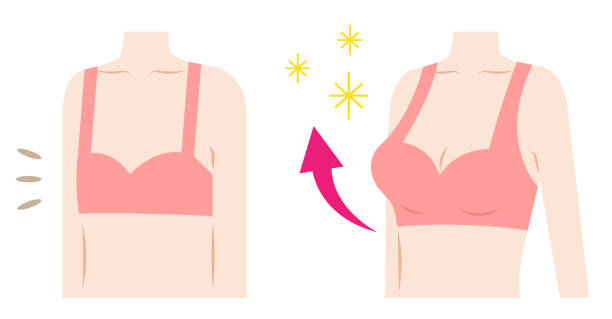Breast Augmentation

Primary breast augmentation is one of the most performed cosmetic surgery and the number of patients undergoing the procedure is increasing each year. Every year, thousands of women pursue breast augmentation to enhance the shape and volume of their breasts to have a more balanced figure. Primary augmentation has the highest rate of post-surgery satisfaction with most patients report significant improvement in quality of life after surgery. Commonly used implants are saline implants, silicone implants, and “gummy bear” silicone implants.
Saline breast implants are silicone shells filled with sterile salt-water solution. If implant shell breaks, the saline solution will be absorbed naturally by your body. This type of implant is approved by the FDA for women above the age of 18.
Silicone implants contain silicone gel as opposed to a saline solution. Most patients with silicone implants feel that they are most resemblant of natural breast tissue. The gel inside the implant is cohesive, thus in case of rupture, it is often non-detectable. MRI is recommended as follow up imaging if rupture is suspected. Silicone breast implants are approved by the FDA for women aged 22 or above.
“Gummy bear” breast implants are silicone implants with more form stable gel. The more form-stable gels feel slightly firmer and is less prone to rippling.
Most common problem reported after breast augmentation surgery requiring additional surgery is capsular contracture (scar formation around the implants). “Gummy bear” breast implants are thought to have less incidence of capsular contracture and often used in revision breast surgeries.
Who are Candidates for Breast Augmentation?
The best candidates are healthy people with realistic expectations of surgery. Common reasons for patients to seek breast enhancement are small breasts, loss of breast volume after breast feeding, or weight change. In case of revision breast surgery, common reasons are over or under size implants, and capsular contracture (scar formation around the implants). In these cases, additional measures may be required to reduce risk of capsular contracture recurrence.
How is Breast Augmentation performed?
Breast augmentation is often performed under general anesthesia in an operating room. Small enhancement can be achieved with fat transfer to the breasts. Larger enhancement requires breast implants, either Saline or silicone. For silicone implants, larger incisions are required. Common location for the Incision are under the breasts, around the areola, or through the armpits. Implants can be placed under or over the muscle. In case of capsular contracture, capsulectomy (excision of the scar tissue around the implant) is required, and often a dermal matrix can be used to lower the risk of recurrence.
What is Recovery Like?
Downtime from surgery is between 1-2 weeks but some patients are able to return to work after a few days. Moderate swelling and minor bruising is expected in the first week. Majority of the swelling will resolve by one month after surgery. Discomfort from swelling and skin stretching are the major complaints after surgery and gentle massage is recommended. No heavy lifting or exercise is permitted during the first month after surgery to allow for tissue around the implant to heal. It is ok to start light cardio after one month but lifting restriction remains until 6 weeks after surgery.
Autologous breast augmentation
Although breast augmentation procedures are most often performed with implants, fat can be harvested from other areas of your body and transferred to the breasts to enhance breast shape and volume as well. This procedure offers multiple benefits, including relatively low complication rates, smaller incisions, and breasts that look and feel completely natural. A good candidate for autologous breast augmentation must have enough excess fat and a realistic expectation of the volume that can be attained through this method.


